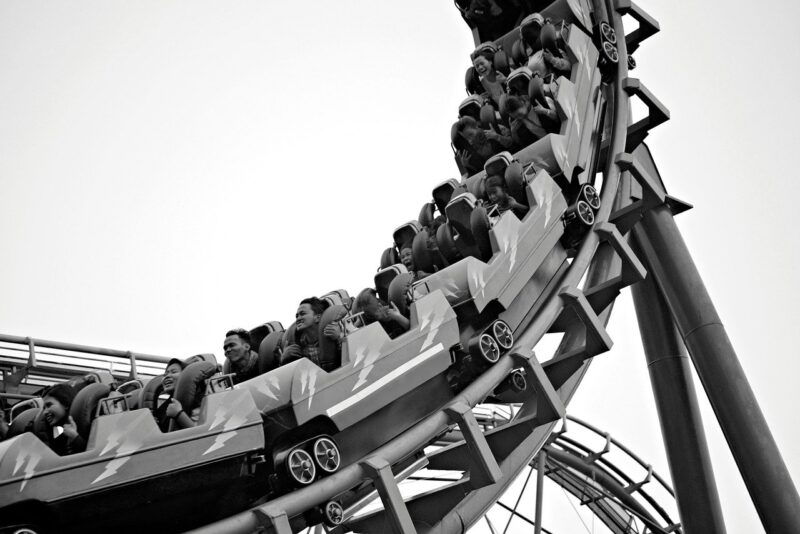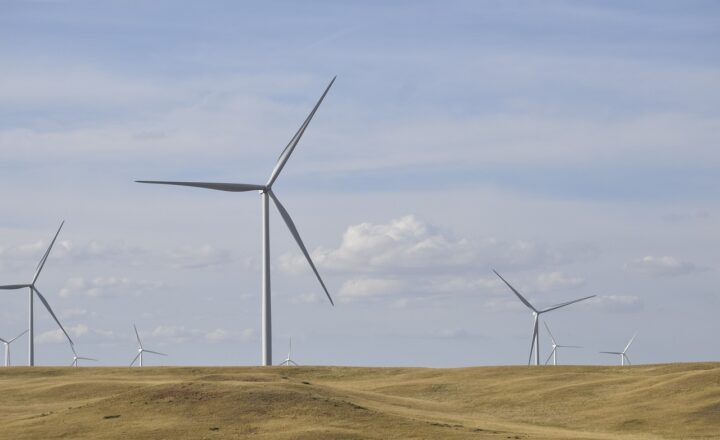The Science Behind Roller Coasters: Energy, Force, and Motion
November 16, 2024

Roller coasters are one of the most exhilarating attractions at amusement parks and fairs around the world. As riders soar through steep drops, sharp turns, and thrilling loops, they experience high levels of excitement and adrenaline. But beneath the screams of joy and the thrill of the ride lies a fascinating world of physics—specifically, the principles of energy, force, and motion.
In this article, we’ll explore how roller coasters are designed to maximize both safety and thrill by utilizing scientific principles. We’ll also take a look at the various kinds of roller coasters and how their designs leverage gravity, kinetic energy, and momentum to create unforgettable rides.
1. The Basic Physics of Roller Coasters
Roller coasters are primarily about energy transfer. At the start of a ride, the coaster train is lifted to a high point, often with the help of a chain lift. At this point, it has a high amount of potential energy due to its elevated position. As it descends, this potential energy is converted into kinetic energy. The transition between these forms of energy underscores all that happens on a roller coaster.
– **Potential Energy (PE)** occurs when the coaster is at the top of a hill. The formula for potential energy is:
[ PE = mgh ]
where ( m ) is mass, ( g ) is acceleration due to gravity, and ( h ) is height.
– **Kinetic Energy (KE)** is what the coaster expresses when it’s in motion. The formula for kinetic energy is:
[ KE = frac{1}{2} mv^2 ]
where ( m ) is mass and ( v ) is velocity.
Understanding these two forms of energy explains why coasters reach incredible speeds and why the experience varies so widely between different rides.
2. The Role of Gravity in Roller Coasters
Gravity is the unsung hero of roller coasters, providing the essential force that keeps the ride going. When a coaster climbs a hill, it requires energy—largely provided by the lift mechanism. Once it crests the hill, gravity takes over, pulling the train downward at increasing speeds.
Every looping and spiraling section of a coaster ride can be explained using gravitational forces. To understand how gravity affects a roller coaster, consider the following elements:
– **Centripetal Force:** As the coaster makes sharp turns or goes into loops, gravity works alongside centripetal force to keep it on track. Riders experience a force pushing them into their seats, known as positive G-forces. The intensity of these forces is crucial for the thrills and safety of the ride.
– **G-Forces:** The effects of acceleration felt by the riders can be categorized as positive (pushing down into the seat), negative (lifting out of the seat), or lateral forces (side-to-side during turns). Coaster designers aim for an optimal G-force experience, typically keeping it within safe levels while maximizing thrill.
3. Types of Roller Coasters: Variety in Design
There are various designs of roller coasters, each exploiting the principles of physics to deliver unique experiences. Here is a brief overview of several popular types:
– **Steel Coasters:** Known for their smooth rides and the ability to create complex inversions, steel coasters utilize tubular steel tracks, allowing for sharp turns and loops while maintaining high speeds as they navigate gravity-driven drops.
– **Wooden Coasters:** These classic rides produce a different feel, often featuring more varied terrain and undulating hills. The tracks are made from wood, and while they provide a more natural sensation of acceleration and deceleration, they can produce greater jolts due to their structure.
– **Inverted Coasters:** Riders are suspended below the track. In these designs, gravity and inertia play a massive role during inversions and twists, leaving riders dangling below the action.
– **Launch Coasters:** Unlike traditional coasters that climb before a descent, launch coasters use powerful magnetic launches or hydraulic systems to achieve quick speeds from a standstill, challenging the traditional experience of roller coasters.
– **Virtual Coasters:** These rides blend motion with virtual reality to create an immersive experience. While they still use fundamental physics principles, they play significantly on the visual experience to simulate height, speed, and terrain.
Each type harnesses energy and force in distinct ways, pushing the limits of roller coaster design.
4. Safety Measures: Ensuring a Thrilling Yet Safe Experience
While the science of roller coasters can be thrilling, safety is a paramount concern in their design. Safety measures utilize the principles of physics to ensure that riders experience excitement without undue risk.
– **Restraints:** Properly designed safety restraints are crucial for keeping riders securely in their seats, especially during rapid accelerations and high G-forces. Lap bars and over-the-shoulder harnesses help prevent unexpected movement.
– **Track Design:** Engineers must rigorously calculate the angles and heights to avoid excessive G-forces that could potentially harm riders. Moreover, tracks are designed to provide graded transitions to lessen the abruptness between high-speed turns and stops.
– **Emergency Braking Systems:** These systems can seize momentum rapidly to halt the coaster in case of system failure or unexpected malfunctions, offering an added layer of security for riders.
Safety protocols ensure that the thrill of a roller coaster is accompanied by appropriate contingencies for emergencies.
5. The Future of Roller Coaster Design
As technological advancements continue to evolve, the future of roller coasters looks brighter and more thrilling. Innovations in engineering, materials, and design promise to enhance the experience further:
– **Smart Coasters:** Integrating technology with traditional rides, smart coasters can adjust speeds or routes based on rider responses and preferences. This interactivity can take thrill-seeking to new heights.
– **Eco-friendly Innovations:** New materials and methods are being developed to minimize the carbon footprint of roller coasters while still delivering exhilarating rides.
– **Enhanced Virtual Reality:** Virtual reality elements continue to expand, providing options to personalize the ride experience further without compromising the physical aspects of the coaster.
Stepping into the future, roller coasters will continue to thrill audiences by balancing science with creativity and technology while altering the way thrill-seekers enjoy amusement parks.
Conclusion: The Thrill of Physics
Roller coasters epitomize the perfect marriage between science and entertainment. From the moment riders ascend to the peak until they plunge into exciting drops and twists, every aspect of a coaster is carefully crafted using the principles of energy, force, and motion. With thoughtful design and rigorous safety measures, roller coasters remain a staple in amusement parks, continually adapting to new technologies while thrilling riders worldwide.
Next time you buckle up for a ride, remember that what you’re experiencing is not just fun—it’s pure physics at play, working together to deliver an unforgettable experience that keeps us coming back for more.






